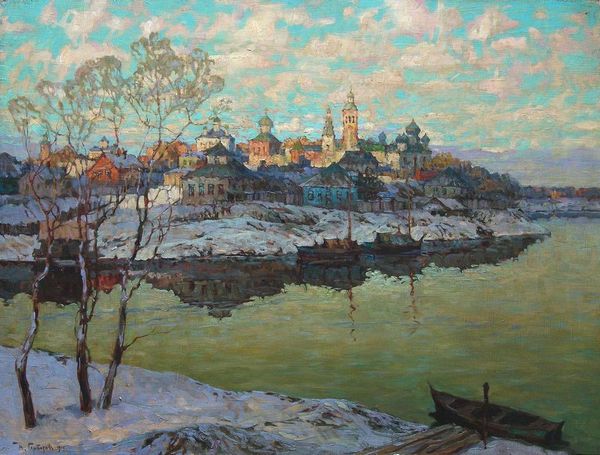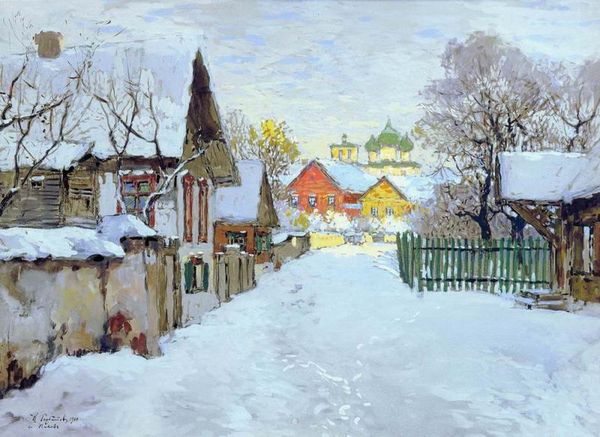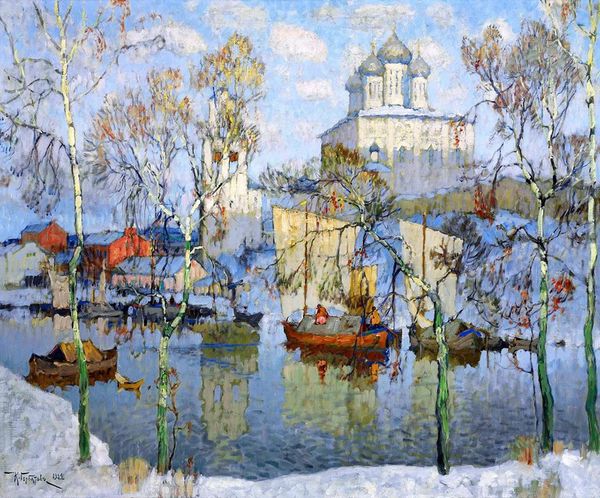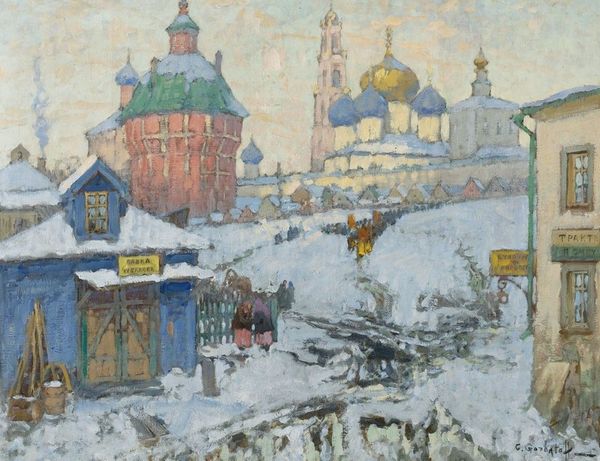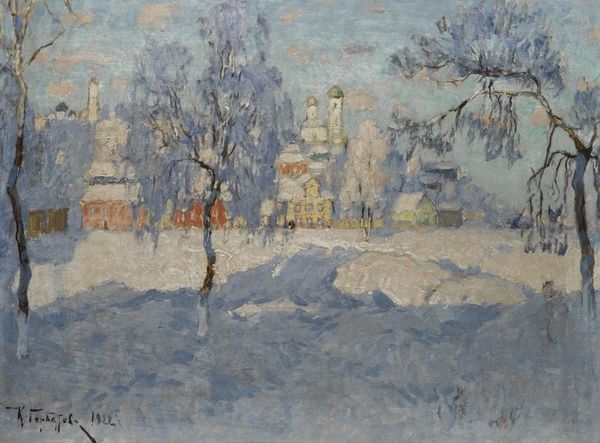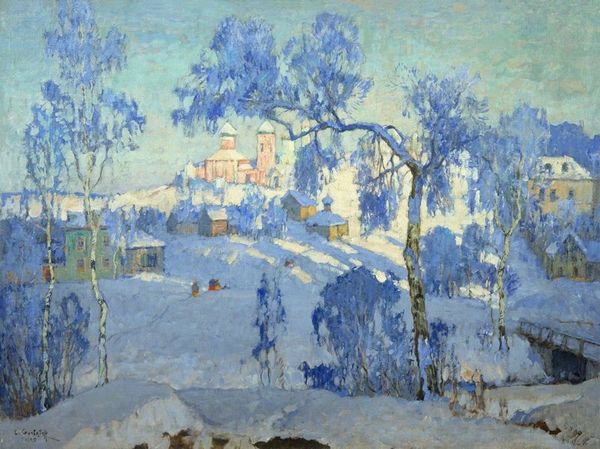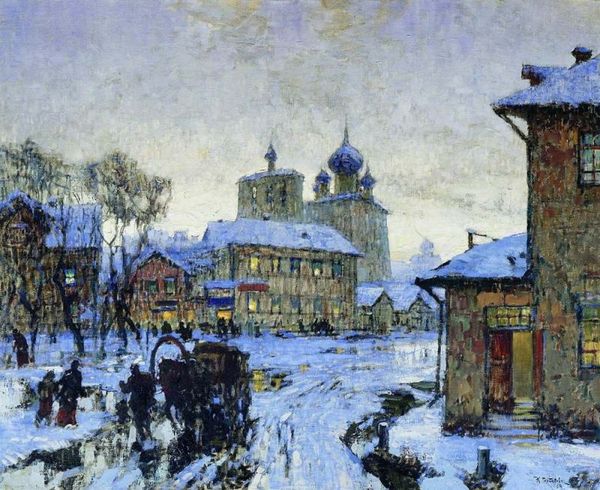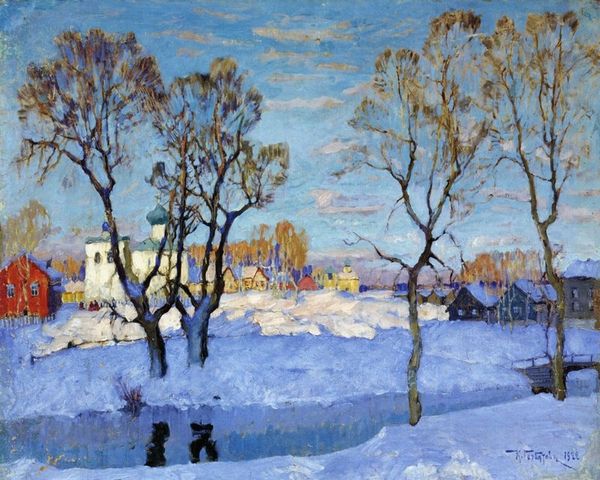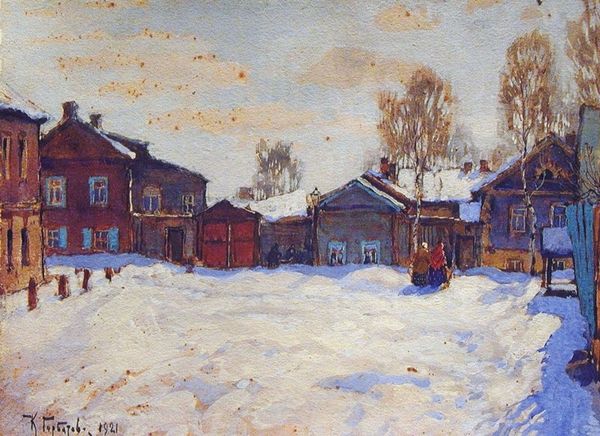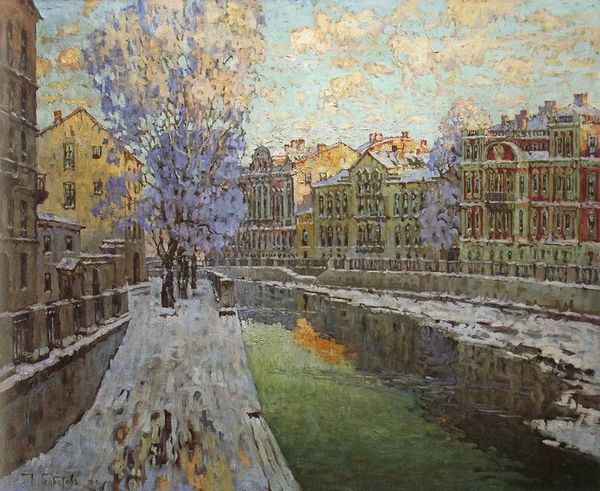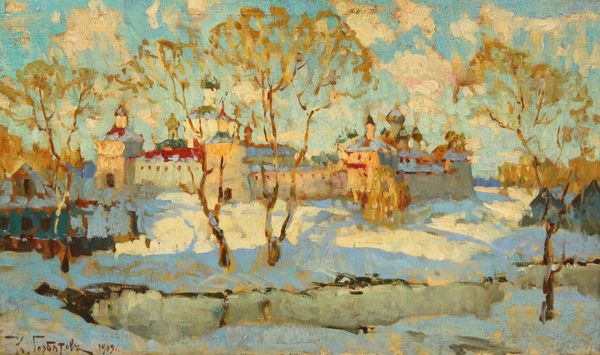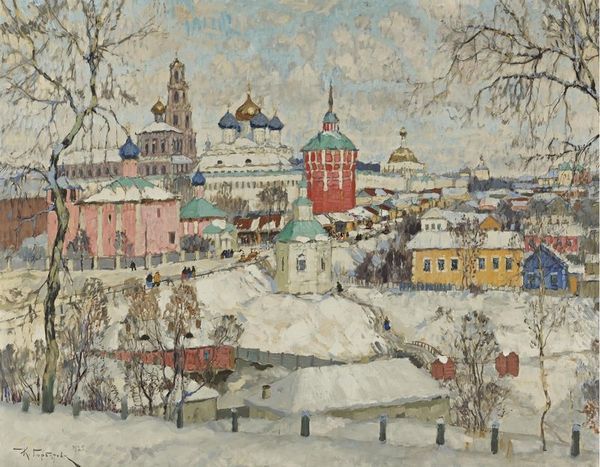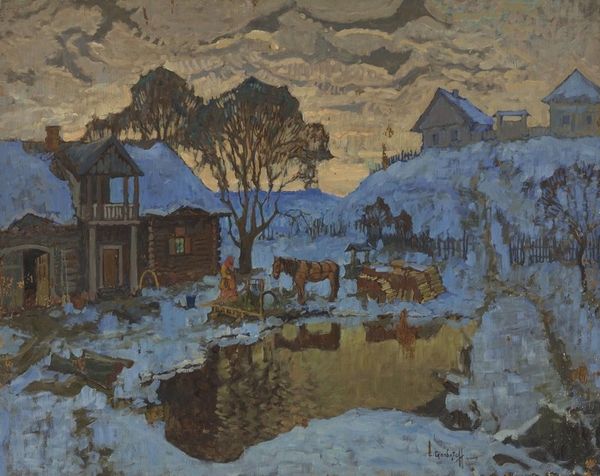
Copyright: Public domain
Editor: This is "Village in the Winter Sun" by Konstantin Gorbatov, painted in 1919. It’s an oil painting, and it really gives off a feeling of quiet, almost serene, isolation. What do you see in this piece? Curator: The prominent church immediately strikes me. In Russian art, especially around this period, religious structures often carry heavy symbolic weight. Do you notice how its domes reach towards the heavens, bathed in sunlight? Editor: I do. It's almost as if the church is acting like a beacon. Curator: Precisely. The way Gorbatov uses light—softly diffused yet present everywhere—speaks to a kind of spiritual illumination despite the stark winter setting. Consider the use of color. Is it truly about the realistic depiction of winter, or something else? Editor: I think it’s about the feeling of winter. There's a kind of hopeful promise despite the cold tones. Curator: And the repetition of the triangular shapes formed by the rooftops and snowdrifts. Does it remind you of anything? Perhaps the holy trinity and associated protective, triangular icons common in Orthodox faith? Editor: That’s a good point. So, even the landscape itself echoes these symbols. What is most compelling to me is how all of those architectural and compositional decisions ultimately result in feelings of longing, memory, and reflection for those left behind. Curator: Exactly. In his visual vocabulary, the setting becomes almost sacred. I think this unveils deeper meanings behind our experience and perception. Editor: I see it now. It is about visual cues steeped in tradition, isn't it? I learned so much just from considering his composition. Curator: Indeed, the image speaks across time, culture, and faiths through light and shadow, structure, and symbol.
Comments
No comments
Be the first to comment and join the conversation on the ultimate creative platform.
